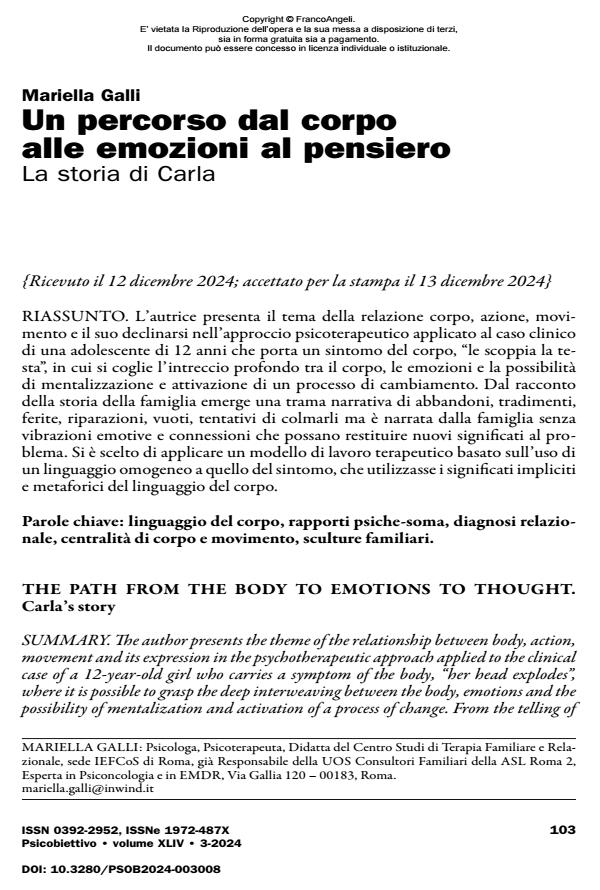The path from the body to emotions to thought. Carla’s story
Journal title PSICOBIETTIVO
Author/s Mariella Galli
Publishing Year 2025 Issue 2024/3
Language Italian Pages 17 P. 103-119 File size 180 KB
DOI 10.3280/PSOB2024-003008
DOI is like a bar code for intellectual property: to have more infomation
click here
Below, you can see the article first page
If you want to buy this article in PDF format, you can do it, following the instructions to buy download credits

FrancoAngeli is member of Publishers International Linking Association, Inc (PILA), a not-for-profit association which run the CrossRef service enabling links to and from online scholarly content.
The author presents the theme of the relationship between body, action, movement and its expression in the psychotherapeutic approach applied to the clinical case of a 12-year-old girl who carries a symptom of the body, “her head explodes”, where it is possible to grasp the deep interweaving between the body, emotions and the possibility of mentalization and activation of a process of change. From the telling of the family’s story, a narrative plot emerges where abandonments, betrayals, wounds, reparations, emotional voids, and attempts to fill them are evident, but it is told by the family without any emotional vibrations or connections that could restore new meanings to the problem. We chose to apply a therapeutic work based on the use of a language that was homogeneous with the one of the symptom, which used the implicit and metaphorical meanings of body language.
Keywords: body language, psyche-soma relationship, relational diagnosis, centrality of body and movement, family sculptures.
Mariella Galli, Un percorso dal corpo alle emozioni al pensiero La storia di Carla in "PSICOBIETTIVO" 3/2024, pp 103-119, DOI: 10.3280/PSOB2024-003008